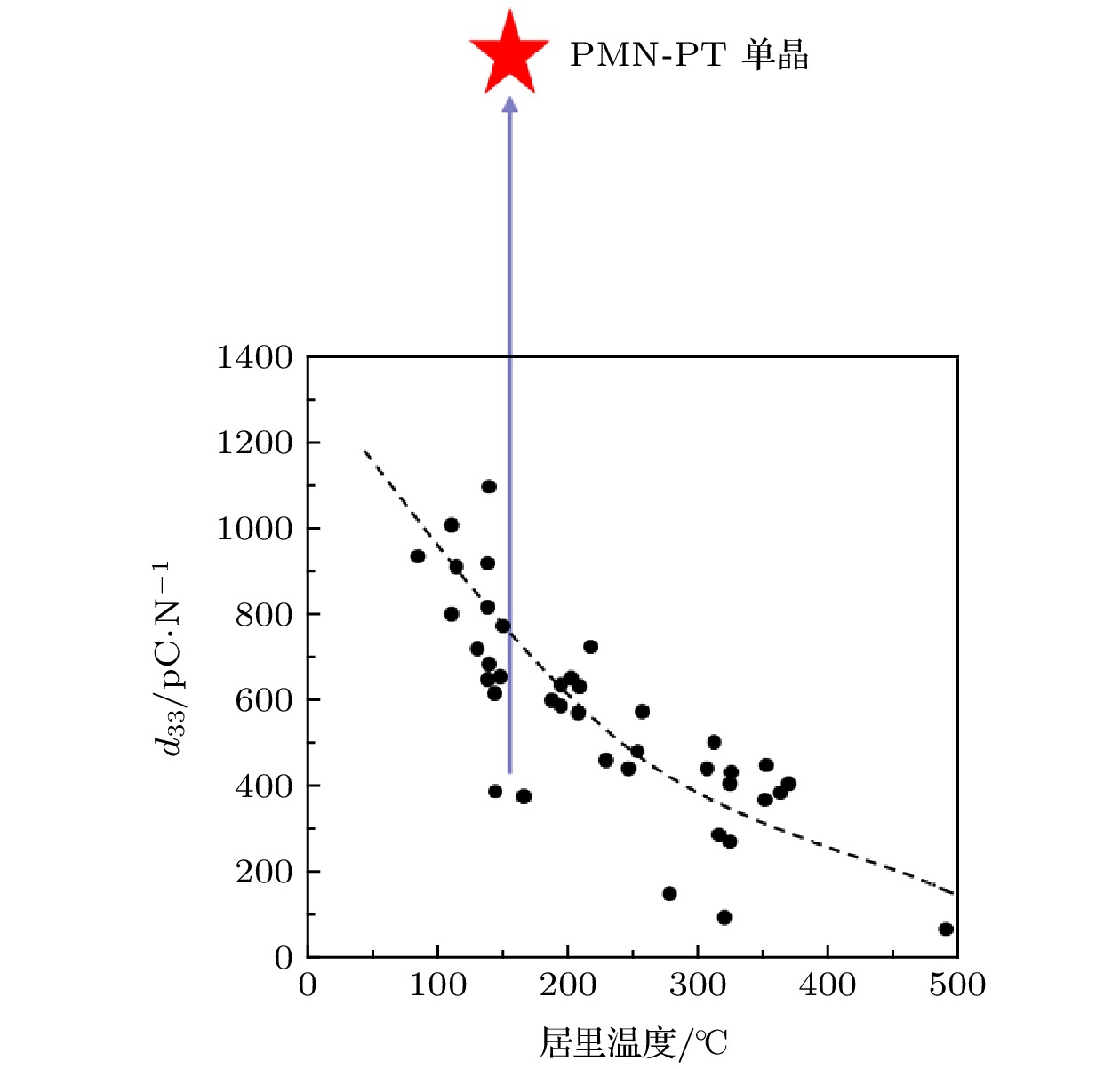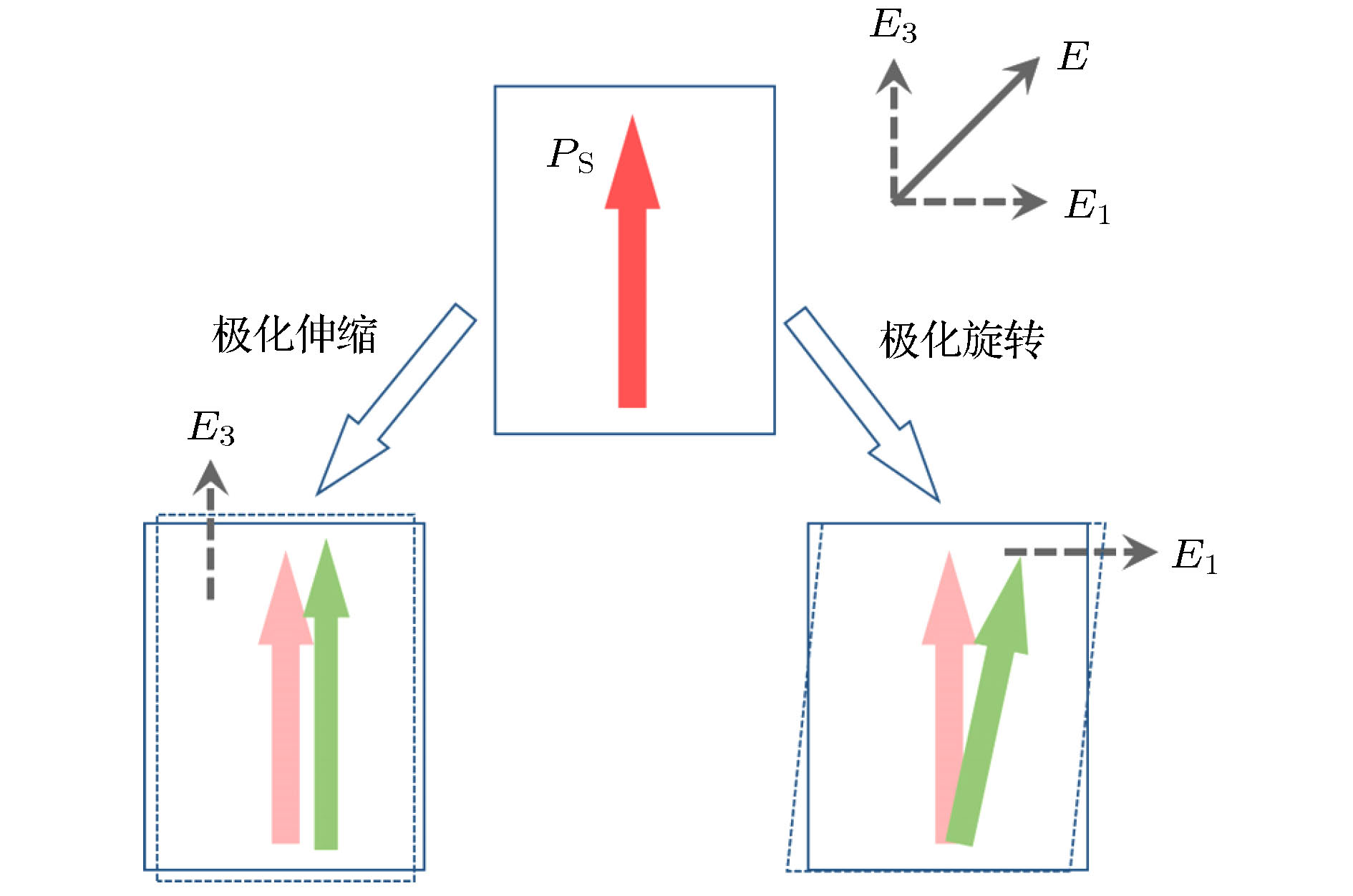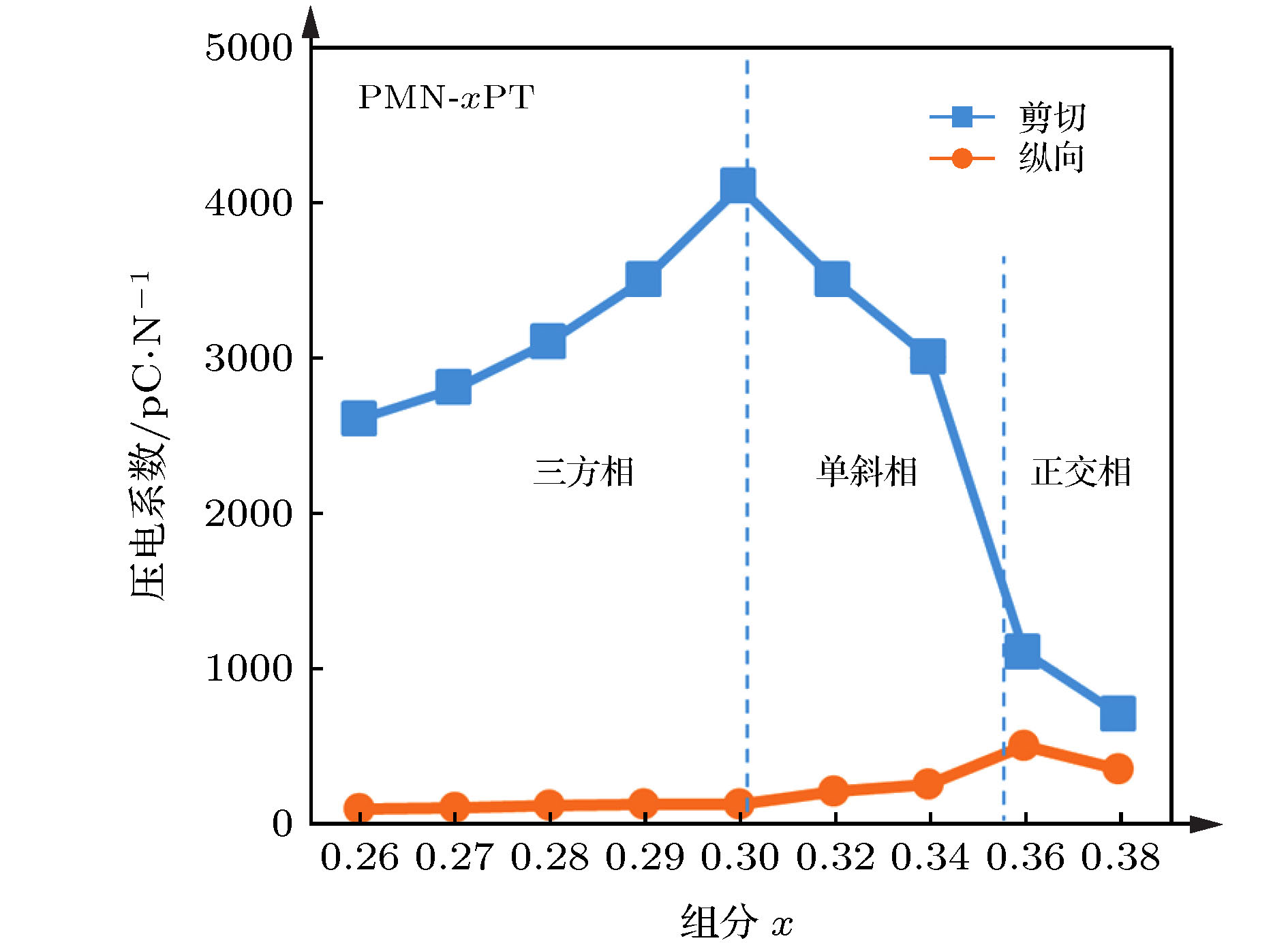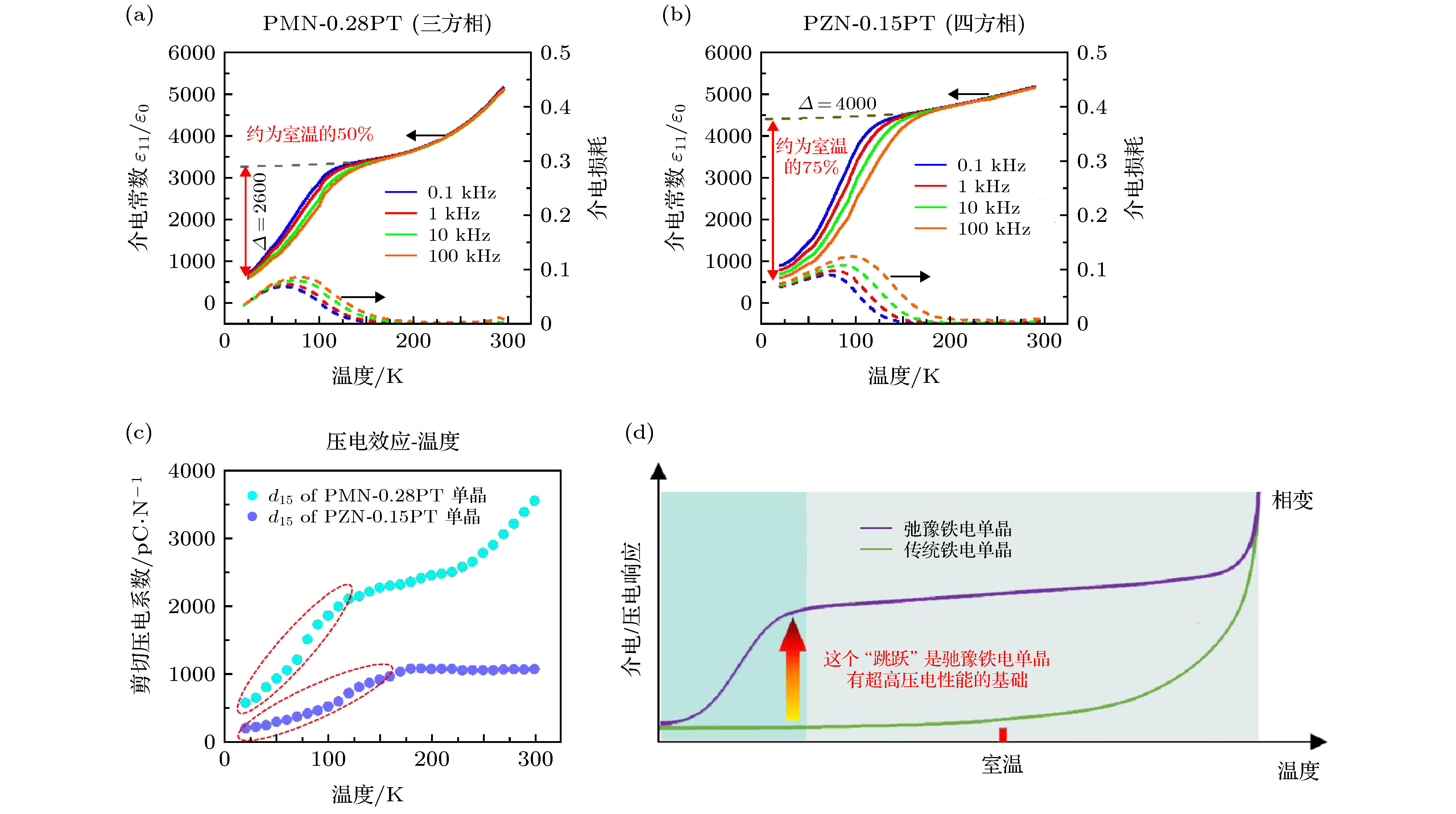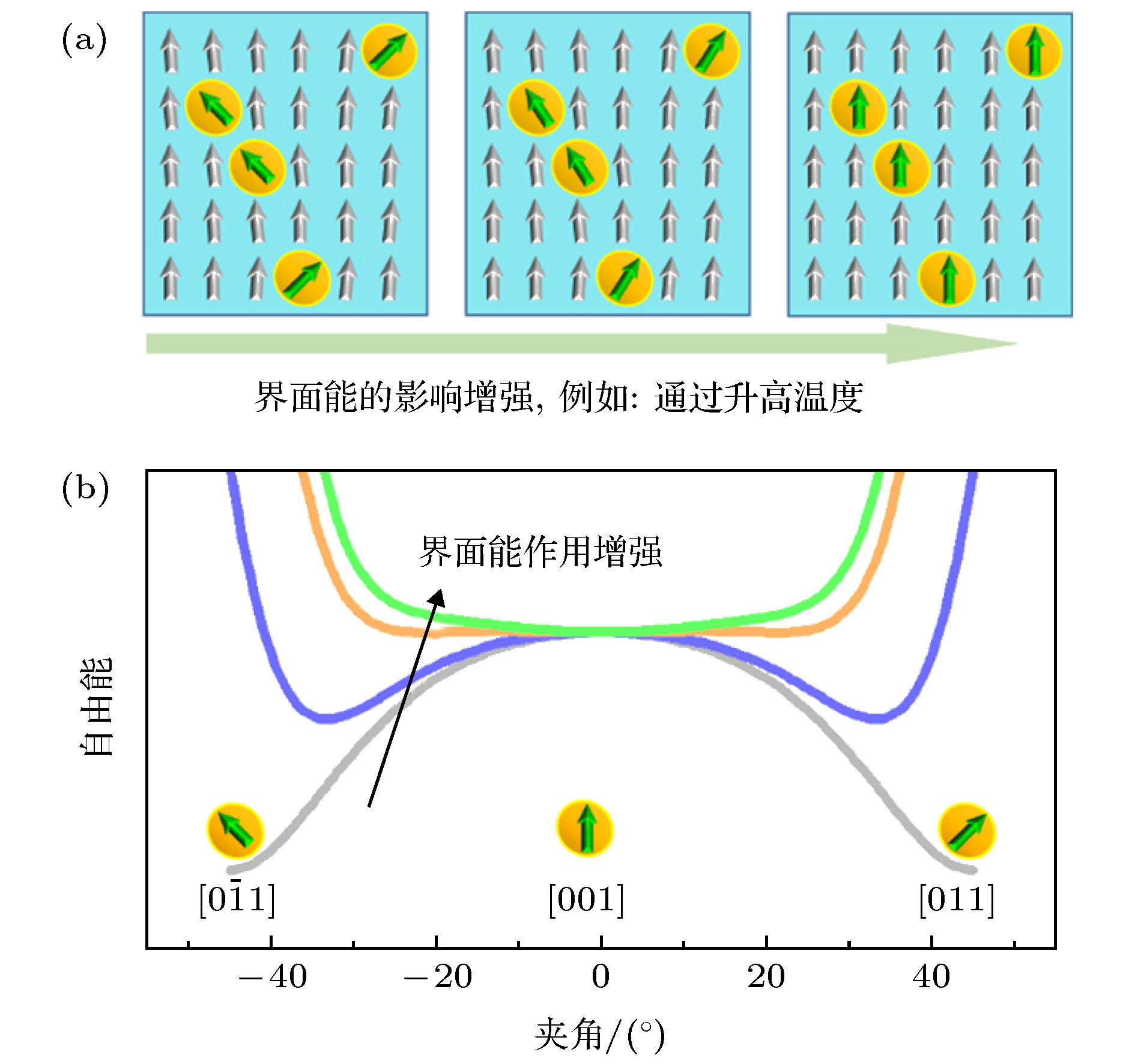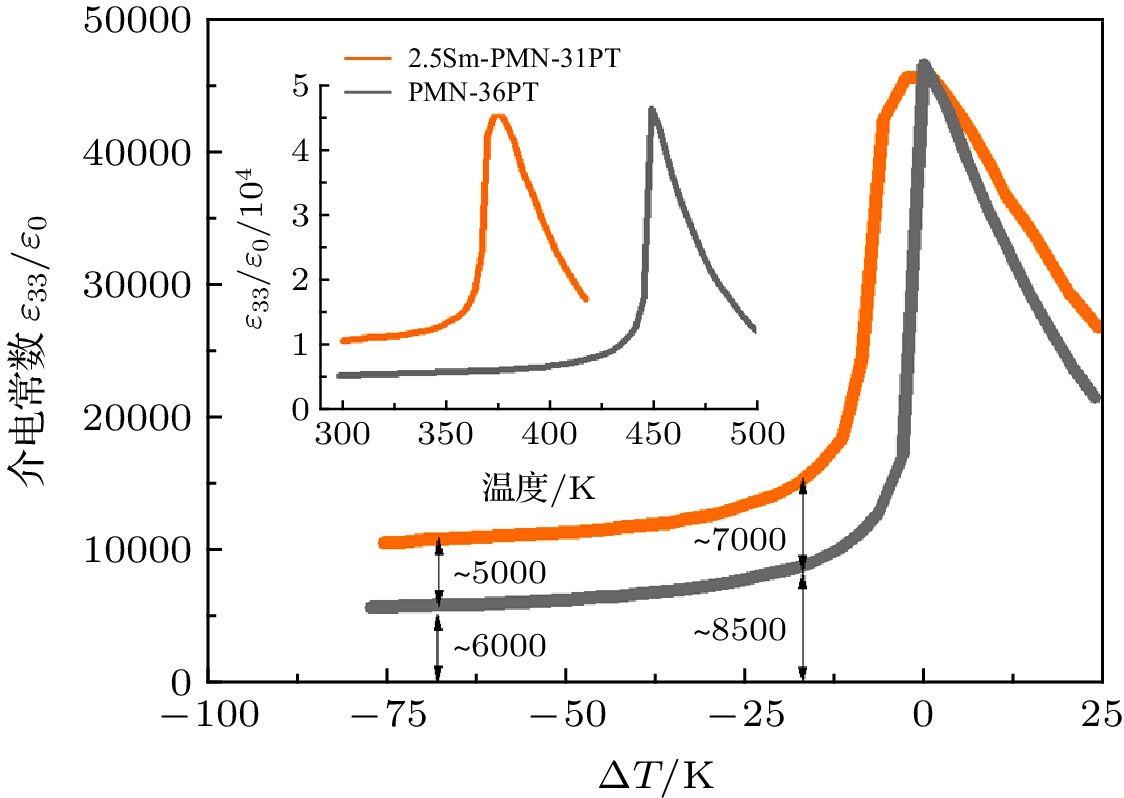-
作为电介质大家庭的重要成员, 铁电材料以其蕴含丰富的物理性质而闻名, 并因此吸引了大量科技工作者. 压电效应是铁电材料最为重要的物理性质之一, 同时也是目前铁电材料所有物理性质中应用最为广泛的. 例如: 水声声呐系统、医疗超声探头、压电驱动器等器件的核心压电元件均为铁电材料. 本文将以时间为轴, 重点介绍钛酸铅基铁电材料压电效应的发展历史, 同时讨论铁电材料微观结构、极化状态与压电效应之间的构效关系. 本文涉及到影响铁电材料压电效应的一些重要因素, 如: “准同型相界”、“软性掺杂”、“极化旋转”、“局域结构无序”等, 希望能够在铁电功能材料的设计方面给予读者启发.As an important member of the dielectric family, ferroelectric materials are known for their various physical properties and have been attracted considerable attention from both scientific respect and technology respect. Piezoelectricity is one of the most important properties of ferroelectrics, which has been widely used in many devices for the conversion between electric energy and mechanical energy. For example, the main piezoelectric elements of underwater acoustic transducers, medical imaging systems, piezoelectric actuators, etc., are all ferroelectrics. In this paper, the history of the piezoelectric effect in lead-based perovskite ferroelectrics is introduced, and the relationship among the microstructure, the state of polarization and the piezoelectricity is discussed. In addition, we introduce some important factors for optimizing the piezoelectricity of ferroelectrics, such as morphotropic phase boundary, soft doping, polarization rotation, local structural heterogeneity, etc. It is expected that this paper could shed light on the future design of ferroelectric materials with various functionalities.
-
Keywords:
- ferroelectrics /
- piezoelectricity /
- property optimization
[1] Shrout T R, Zhang S J 2007 J. Electroceram. 19 111
 Google Scholar
Google Scholar
[2] Wu J G, Xiao D Q, Zhu J G 2015 Chem. Rev. 115 2559
 Google Scholar
Google Scholar
[3] Jaffe H 1958 J. Am. Ceram. Soc. 41 494
 Google Scholar
Google Scholar
[4] Damjanovic D 2009 IEEE Trans. Ultrason. Ferroelectr. Freq. Control 56 1574
 Google Scholar
Google Scholar
[5] Fu H X, Cohen R E 2000 Nature 403 281
 Google Scholar
Google Scholar
[6] Damjanovic D 2006 The Science of Hysteresis (Vol. Ⅲ) (New York: Academic Press) pp337−465
[7] Cross L E 1993 Ferroelectric Ceramics (Basel: Birkhäuser) pp1-86
[8] Cross L E 1987 Ferroelectr. 76 241
 Google Scholar
Google Scholar
[9] Bokov A A, Ye Z G 2006 J. Mater. Sci. 41 31
 Google Scholar
Google Scholar
[10] Li F, Zhang S J, Damjanovic D, Chen L Q, Shrout T R 2018 Adv. Funct. Mater. 28 1801504
 Google Scholar
Google Scholar
[11] Nomura S, Arima H, Kojima F 1973 Jpn. J. Appl. Phys. 12 531
 Google Scholar
Google Scholar
[12] Kuwata J, Uchino K, Nomura S 1982 Jpn. J. Appl. Phys. 21 1298
 Google Scholar
Google Scholar
[13] Park S E, Shrout T R 1997 J. Appl. Phys. 82 1804
 Google Scholar
Google Scholar
[14] Zhang R, Jiang B, Cao W W 2003 Appl. Phys. Lett. 82 3737
 Google Scholar
Google Scholar
[15] Zhang S J, Li F 2012 J. Appl. Phys. 111 031301
 Google Scholar
Google Scholar
[16] Phelan D, Stock C, Rodriguez-Rivera J A, Chi S X, Leão J, Long X F, Xie Y J, Bokov A A, Ye Z G, Ganesh P, Gehring P M 2014 Proc. Nati. Acad. Sci. 111 1754
 Google Scholar
Google Scholar
[17] Li F, Zhang S J, Yang T N, Xu Z, Zhang N, Liu G, Wang J J, Wang J L, Cheng Z X, Ye Z G, Luo J, Shrout T R, Chen L Q 2016 Nat. Commun. 7 13807
 Google Scholar
Google Scholar
[18] Li F, Zhang S J, Xu Z, Chen L Q 2017 Adv. Funct. Mater. 27 1700310
 Google Scholar
Google Scholar
[19] Xu G Y, Zhong Z, Hiraka H, Shirane G 2004 Phys. Rev. B 70 174109
 Google Scholar
Google Scholar
[20] Chen J, Chan H M, Harmer M P 1989 J. Am. Ceram. Soc. 72 593
 Google Scholar
Google Scholar
[21] Li F, Lin D B, Chen Z B, Cheng Z X, Wang J L, Li C C, Xu Z, Huang Q W, Liao X Z, Cheng L Q, Shrout T R, Zhang S J 2018 Nat. Mater. 17 349
 Google Scholar
Google Scholar
[22] Li F, Cabral M J, Xu B, Cheng Z X, Dickey E C, LeBeau J M, Wang J L, Luo J, Taylor S, Hackenberger W, Bellaiche L, Xu Z, Chen L Q, Shrout T R, Zhang S J 2019 Science 364 264
 Google Scholar
Google Scholar
[23] Li C C, Xu B, Lin D B, Zhang S J, Bellaiche L, Shrout T R, Li F 2020 Phys. Rev. B 101 140102
 Google Scholar
Google Scholar
[24] Wada S, Yako K, Kakemoto H, Tsurumi T, Kiguchi T 2005 J. Appl. Phys. 98 014109
 Google Scholar
Google Scholar
[25] Qiu C R, Wang B, Zhang N, Zhang S J, Liu J F, Walker D, Wang Y, Tian H, Shrout T R, Xu Z, Chen L Q, Li F 2020 Nature 577 350
 Google Scholar
Google Scholar
[26] Tao H, Wu H J, Liu Y, Zhang Y, Wu J G, Li F, Lyu X, Zhao C L, Xiao D Q, Zhu J G, Pennycook S J 2019 J. Am. Chem. Soc. 141 13987
 Google Scholar
Google Scholar
[27] Wang K, Li J F 2010 Adv. Funct. Mater. 20 1924
 Google Scholar
Google Scholar
[28] Liu W F, Ren X B 2009 Phys. Rev. Lett. 103 257602
 Google Scholar
Google Scholar
[29] You Y M, Liao W Q, Zhao D W, Ye H Y, Zhang Y, Zhou Q H, Niu X H, Wang J L, Li P F, Fu D W, Wang Z M, Gao S, Yang K L, Liu J M, Li J Y, Yan Y F, Xiong R G 2017 Science 357 306
 Google Scholar
Google Scholar
[30] Ye H Y, Tang Y Y, Li P F, Liao W Q, Gao J X, Hua X N, Cai H, Shi P P, You Y M, Xiong R G 2018 Science 361 151
 Google Scholar
Google Scholar
-
图 1 (a)单畴铁电材料极化矢量长程有序示意图, 其中红色箭头代表偶极矩; (b)自发极化与温度关系示意图(以二级铁电相变为例); (c)介电常数与温度关系
Fig. 1. (a) Schematic drawing of long-range ordered ferroelectrics with single-domain structure, where the red arrows indicate the electric dipoles; (b) the relationship between spontaneous polarization and temperature (taking the second-order ferroelectric phase transition as an example); (c) the relationship between dielectric permittivity and temperature.
图 2 (a)热力学计算得到的三种不同组分PZT自由能与自发极化方向的关系, 图中给出了自发极化在
$(1\bar 10)$ 面内由$[111]$ 方向转向$[\bar 1\bar 11]$ 方向过程中自由能的变化情况; (b)自发极化在$(1\bar 10)$ 面内, 由$[111]$ 方向转至$[\bar 1\bar 11]$ 方向的示意图Fig. 2. (a) Relationship between the free energy and the direction of spontaneous polarization of three PZT solid-solutions, calculated by phenomenological theory; (b) the schematic of the rotation of the spontaneous polarization from
$[111]$ to$[\bar 1\bar 11]$ direction within the$(1\bar 10)$ plane.图 5 剪切与纵向压电效应示意图(对于任意的铁电畴, 所受外加电场总可以按照电场与自发极化方向关系分为两类: 1)电场方向与自发极化相同的分量, E3; 2)电场方向与自发极化垂直的分量, E1. 图中红色箭头代表自发极化方向, 绿色箭头代表加电场后的自发极化方向)
Fig. 5. Schematic of shear and longitudinal piezoelectric responses. For a ferroelectric single-domain, the applied electric field can be divided into two categories: 1) The electric field (E3) parallel to the direction of the spontaneous polarization; 2) the electric field (E1) perpendicular to the direction of the spontaneous polarization. The red arrows represent the direction for the spontaneous polarization, and the green arrows represent the direction for the spontaneous polarization after applying an electric field.
图 7 PMN与PZT单晶的中子弹性弥散散射实验结果(图中纵轴为弥散散射强度, 其强度越大, 则表示局域结构无序性越强; 插图给出了在(001)散射面附近测得的弹性散射强度等值线的形状)[16]
Fig. 7. Neutron elastic diffuse scattering results for PMN and PZT single crystals. The y-axis represents the diffuse scattering intensity. The higher the intensity indicates the higher degree of the local structural heterogeneity. The inset figures give the contour maps of elastic scattering intensity measured near the (001) plane[16].
图 8 单畴弛豫铁电单晶低温介电、压电性能[17,18] (a)单畴三方相PMN-0.28PT单晶横向介电常数(ε11); (b)单畴四方相PZN-0.15PT单晶横向介电常数(ε11); (c)两种晶体的低温剪切压电系数; (d)相比于传统铁电单晶, 弛豫铁电单晶室温高性能起因的示意图
Fig. 8. Low-temperature dielectric and piezoelectric properties of single-domain relaxor ferroelectric single crystals[17,18]: (a) Transverse dielectric (ε11) permittivity for rhombohedral PMN-0.28PT crystal; (b) transverse dielectric (ε11) permittivity for tetragonal PZN-0.15PT crystals; (c) shear piezoelectric properties for relaxor-PT crystals; (d) the origin of the ultrahigh dielectric/piezoelectric properties in relaxor-PT ferroelectric crystals when compared to the conventional ferroelectric crystals.
图 10 (a)四方相长程铁电畴中嵌入正交相极性微区的结构示意图; (b)正交相极性微区自由能随界面能作用增强的变化(热力学计算结果), 其中横轴表示极化矢量与[001]方向的夹角[17]
Fig. 10. (a) Phase-field simulated microstructural variation of a tetragonal ferroelectric with embedded orthorhombic polar nanoregions (PNRs); (b) the change of free energy profiles of the PNRs with increasing the impact of interfacial energy. The x-axis represents the angle between the polar vector and the [001] direction[17].
图 11 单畴PZN-0.15PT的相场模拟结果 (a)极化矢量方向随温度的变化, 图中颜色代表极化矢量与水平方向的夹角; (b)横向介电常数与温度关系的模拟结果[17]
Fig. 11. Phase-field simulation results of single-domain PZN-0.15PT crystal: (a) Temperature-dependent microstructural variations (the color bar denotes the angle between the polar vector and the horizontal direction); (b) the transverse dielectric permittivity versus temperature[17].
图 12 温度为350 K时, 单畴PZN-0.15PT晶体在横向电场作用下介观结构变化(a)和相应的极化强度-电场(P-E)曲线(b), 图(a)中, 颜色代表极化矢量与水平方向的夹角(为了与经典铁电畴性能进行对比, 图(a)和(b)中给出了没有极性微区的长程铁电的模拟结果)[17]
Fig. 12. Microstructural variation under a transverse electric field for the single-domain PZN-0.15PT crystal at 350 K and the corresponding P-E curve. In panel (a), the color represents the angle between polar vectors and the horizontal direction. Panels (a) and (b) also gave the simulated results for a classical ferroelectric single-domain (tetragonal matrix)[17].
-
[1] Shrout T R, Zhang S J 2007 J. Electroceram. 19 111
 Google Scholar
Google Scholar
[2] Wu J G, Xiao D Q, Zhu J G 2015 Chem. Rev. 115 2559
 Google Scholar
Google Scholar
[3] Jaffe H 1958 J. Am. Ceram. Soc. 41 494
 Google Scholar
Google Scholar
[4] Damjanovic D 2009 IEEE Trans. Ultrason. Ferroelectr. Freq. Control 56 1574
 Google Scholar
Google Scholar
[5] Fu H X, Cohen R E 2000 Nature 403 281
 Google Scholar
Google Scholar
[6] Damjanovic D 2006 The Science of Hysteresis (Vol. Ⅲ) (New York: Academic Press) pp337−465
[7] Cross L E 1993 Ferroelectric Ceramics (Basel: Birkhäuser) pp1-86
[8] Cross L E 1987 Ferroelectr. 76 241
 Google Scholar
Google Scholar
[9] Bokov A A, Ye Z G 2006 J. Mater. Sci. 41 31
 Google Scholar
Google Scholar
[10] Li F, Zhang S J, Damjanovic D, Chen L Q, Shrout T R 2018 Adv. Funct. Mater. 28 1801504
 Google Scholar
Google Scholar
[11] Nomura S, Arima H, Kojima F 1973 Jpn. J. Appl. Phys. 12 531
 Google Scholar
Google Scholar
[12] Kuwata J, Uchino K, Nomura S 1982 Jpn. J. Appl. Phys. 21 1298
 Google Scholar
Google Scholar
[13] Park S E, Shrout T R 1997 J. Appl. Phys. 82 1804
 Google Scholar
Google Scholar
[14] Zhang R, Jiang B, Cao W W 2003 Appl. Phys. Lett. 82 3737
 Google Scholar
Google Scholar
[15] Zhang S J, Li F 2012 J. Appl. Phys. 111 031301
 Google Scholar
Google Scholar
[16] Phelan D, Stock C, Rodriguez-Rivera J A, Chi S X, Leão J, Long X F, Xie Y J, Bokov A A, Ye Z G, Ganesh P, Gehring P M 2014 Proc. Nati. Acad. Sci. 111 1754
 Google Scholar
Google Scholar
[17] Li F, Zhang S J, Yang T N, Xu Z, Zhang N, Liu G, Wang J J, Wang J L, Cheng Z X, Ye Z G, Luo J, Shrout T R, Chen L Q 2016 Nat. Commun. 7 13807
 Google Scholar
Google Scholar
[18] Li F, Zhang S J, Xu Z, Chen L Q 2017 Adv. Funct. Mater. 27 1700310
 Google Scholar
Google Scholar
[19] Xu G Y, Zhong Z, Hiraka H, Shirane G 2004 Phys. Rev. B 70 174109
 Google Scholar
Google Scholar
[20] Chen J, Chan H M, Harmer M P 1989 J. Am. Ceram. Soc. 72 593
 Google Scholar
Google Scholar
[21] Li F, Lin D B, Chen Z B, Cheng Z X, Wang J L, Li C C, Xu Z, Huang Q W, Liao X Z, Cheng L Q, Shrout T R, Zhang S J 2018 Nat. Mater. 17 349
 Google Scholar
Google Scholar
[22] Li F, Cabral M J, Xu B, Cheng Z X, Dickey E C, LeBeau J M, Wang J L, Luo J, Taylor S, Hackenberger W, Bellaiche L, Xu Z, Chen L Q, Shrout T R, Zhang S J 2019 Science 364 264
 Google Scholar
Google Scholar
[23] Li C C, Xu B, Lin D B, Zhang S J, Bellaiche L, Shrout T R, Li F 2020 Phys. Rev. B 101 140102
 Google Scholar
Google Scholar
[24] Wada S, Yako K, Kakemoto H, Tsurumi T, Kiguchi T 2005 J. Appl. Phys. 98 014109
 Google Scholar
Google Scholar
[25] Qiu C R, Wang B, Zhang N, Zhang S J, Liu J F, Walker D, Wang Y, Tian H, Shrout T R, Xu Z, Chen L Q, Li F 2020 Nature 577 350
 Google Scholar
Google Scholar
[26] Tao H, Wu H J, Liu Y, Zhang Y, Wu J G, Li F, Lyu X, Zhao C L, Xiao D Q, Zhu J G, Pennycook S J 2019 J. Am. Chem. Soc. 141 13987
 Google Scholar
Google Scholar
[27] Wang K, Li J F 2010 Adv. Funct. Mater. 20 1924
 Google Scholar
Google Scholar
[28] Liu W F, Ren X B 2009 Phys. Rev. Lett. 103 257602
 Google Scholar
Google Scholar
[29] You Y M, Liao W Q, Zhao D W, Ye H Y, Zhang Y, Zhou Q H, Niu X H, Wang J L, Li P F, Fu D W, Wang Z M, Gao S, Yang K L, Liu J M, Li J Y, Yan Y F, Xiong R G 2017 Science 357 306
 Google Scholar
Google Scholar
[30] Ye H Y, Tang Y Y, Li P F, Liao W Q, Gao J X, Hua X N, Cai H, Shi P P, You Y M, Xiong R G 2018 Science 361 151
 Google Scholar
Google Scholar
计量
- 文章访问数: 36456
- PDF下载量: 1759
- 被引次数: 0














 下载:
下载:











